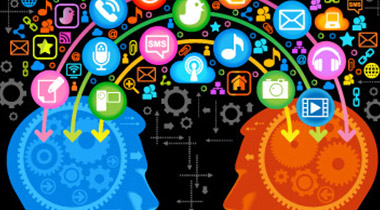Using Social Intelligence For Business Decision Making
In this day and age we are hyperactive online. Social media has brought the authentic, unfiltered voice of the masses to the web and amplified them. Which is great but it has led to an avalanche of data. This data is real time, unstructured, impulsive, many to many, relationship driven and motivated.
In 2007 it might have been enough to just monitor social media to see what people are saying about your company and products. But in 2016, businesses need to act quickly, respond carefully, and lead the conversation around the business among customers. If you have not already invested time and energy into better understanding social intelligence, now is the time to start focusing on listening to the conversations around you, and to start, learn the “The Social Intelligence Continuum”
- Descriptive – Hindsight
- Diagnostic/Predictive – Insight
- Preemptive – Foresight
Social data can help your business get to the third stage, where you can use foresight to drive your business decisions. A helpful tip explained by Jason Harris of Sysomos is, identifying the conversations taking place online about your brand, and then extract those data, sentiment, and patterns. Knowing more about online conversations also makes it easier to identify the next best steps, such as responding to an individual, or adding them into your sales pipeline. What other decisions can “Social Intelligence” inform?
Guide merchandising decisions
Make smarter decisions with which products you should feature on your website, through marketing efforts, and other forms of communication to the market? Understand the purchasing decisions of customers, and why an individual purchases Product X from your competitor, and not Product Y from you. For example, a video game producer can make informed decisions on how well a new game will perform in key retailers from the spikes in conversation when the game trailer debuts or pre-sales begin online.
Segment your audiences to achieve greater engagement
With a feature called “Communities” you can create an influencer map. For example, from the first episode of The Great British Bake Off, the #GBBO hashtag is used heavily, but individuals will include it in posts for a variety of reasons and perspectives. Not everyone talking about the show will care about baking, or have a positive outlook on it. You can understand the catalysts for conversation, and then separate out the different topics to better understand the discussions and communities participating.
Ensure Customer Happiness
Use social data to ensure customers are happy throughout the lifecycle of a purchase. If you are going to listen, you need to make sure that you have a system in place to be able to act and respond efficiently and accurately. Make sure the right people on your team know their responsibility in social listening. If you’re a global firm, you might need HR and Legal to help establish your strategy for listening online, responding to customers, and protecting the business. There are some traditional organizations that are just now realizing the value of social listening, and the processes might not be in place yet.
5 ways to tap into social intelligence
- Understand not just what your community is saying but learn why they’re saying it and what they care about.
- Conduct real time, ad-hoc search of the entire social web, right now. Identify relevant moments and resonance of messages in real time, as they’re happening.
- Learn the fabric of your communities, who is connected to whom, who wields true influence in the topics you care about, and what they have in common.
- Shape your content and social engagement strategy to mirror your customer’s needs.
- Guide your product and service strategy based on knowledge of your customer’s expressed needs, not guesswork and inference.
Article Written By: Kate Hamer
0

